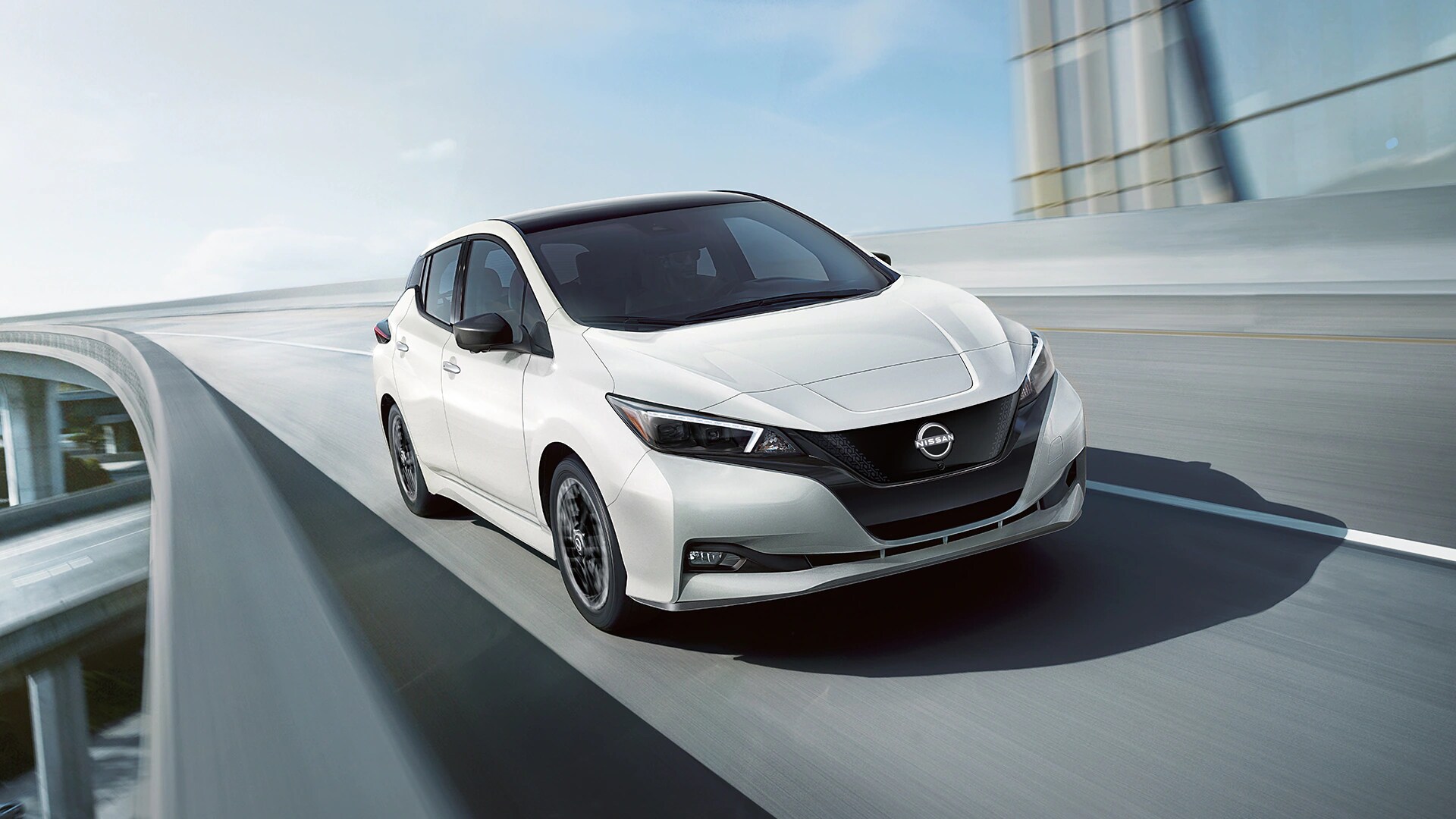
Two popular small SUV options are the 2023 Nissan Leaf and the 2023 Hyundai Ioniq 5. However, there are some significant differences between these two options, making it probable that one is better for you than the other. Below, we'll highlight some key differences to help you decide.
2023 Nissan Leaf vs. 2023 Hyundai Ioniq 5: Interior Space and Comfort

Let's start by looking at how comfortable you'll be inside these EVs. When you get inside the 2023 Nissan Leaf, you'll first notice how comfortable the seats are. You can easily sit in these seats for long drives and be comfortable. There's also plenty of interior space for the driver and the passengers in the rear. It may not seem like it from the outside, but the 2023 Nissan Leaf has lots of interior space, including the cargo area, which you can expand by folding down the rear seats.
As for the 2023 Hyundai Ioniq 5, the interior features a very modern design and some eco-friendly materials. For instance, a head-up display can project navigation onto the windshield. Another significant element of the 2023 Hyundai Ioniq 5 is that you can recline the front seats and use footrests, which will help you stay comfortable while charging the battery.
2023 Nissan Leaf vs. 2023 Hyundai Ioniq 5: Power and Performance
Next, the 2023 Nissan Leaf delivers a strong performance across the board. On the standard model, you'll get an electric motor and a 40-kWh battery that combine to provide 147 horsepower. A larger battery and more robust motor are also available on the SV Plus trim, which boosts the horsepower to 214. Regardless of your choice, you should find that the 2023 Nissan Leaf delivers strong acceleration and good high-end speeds.
As for the 2023 Hyundai Ioniq 5, there are several setups available. The standard configuration produces 168 horsepower from the rear-mounted electric motor. Opting for a larger battery boosts this to 225 horsepower while getting the all-wheel-drive setup will increase it even further to 320 horsepower. If power is your primary concern, you may prefer a higher-end 2023 Hyundai Ioniq 5.
2023 Nissan Leaf vs. 2023 Hyundai Ioniq 5: Driving Range
An important factor when considering any electric vehicle is how far you can drive with the battery. On the Nissan Leaf's standard model, you can expect to travel about 149 miles on a single battery charge. Upgrading to the larger battery pack boosts this driving range to 215 miles. You can replenish both battery packs in about seven hours, making them ideal for overnight charging. Finally, you can enable the Leaf's e-Pedal feature, which allows you to adjust the braking method to charge your battery whenever you take your foot off the gas pedal.
The 2023 Hyundai Ioniq 5 does a little better regarding driving range. The standard battery lasts around 220 miles, while the larger battery lasts about 266 miles. If you have a DC fast charger available, you can get the 2023 Hyundai Ioniq 5's battery from 10% to 80% in about 18 minutes.
2023 Nissan Leaf vs. 2023 Hyundai Ioniq 5: Entertainment Tech
All 2023 Nissan Leaf models come with an 8-inch touch-screen infotainment system. Through this system, you can easily connect your smart device, thanks to Apple CarPlay and Android Auto integrations. You can also add a built-in navigation system to help you get around. Finally, if you want a more premium audio experience, you can upgrade to a seven-speaker Bose audio system with excellent quality.
On the other hand, the 2023 Hyundai Ioniq 5 features a 12-inch touch-screen display. This system also features Apple CarPlay and Android Auto. However, you'll need wires to connect to it. An advanced voice-recognition software program allows you to complete various driving tasks.
2023 Nissan Leaf vs. 2023 Hyundai Ioniq 5: Safety Features
The 2023 Nissan Leaf comes with a host of standard safety features that help drivers avoid road accidents. Some of the standard safety features include:
- Automated emergency braking.
- Blind-spot monitoring.
- Rear cross-traffic alert.
- Pedestrian detection.
In addition, you can also add Nissan's ProPilot Assist, which is a semi-autonomous driving mode.Â
As for the 2023 Hyundai Ioniq 5, many of the same safety features are available. However, not all of them come standard like they do with the Nissan Leaf. The Ioniq 5 also offers a semi-autonomous driving mode called Highway Driver Assist 2. You'll want to explore each trim of the Ioniq 5 in depth to see which safety features come with it.
2023 Nissan Leaf vs. 2023 Hyundai Ioniq 5: Trims and MSRP
An important thing you'll want to consider with each vehicle is the cost. The starting MSRP for each depends on which trim you select, which also impacts the features and performance you get. For the 2023 Nissan Leaf, the available trim levels and their starting MSRPs are:
- 2023 Nissan Leaf S:Â $29,135.
- 2023 Nissan Leaf SV Plus:Â $37,135.
As for the 2023 Hyundai Ioniq 5, these figures are:
- 2023 Hyundai Ioniq 5 SE:Â $42,745.
- 2023 Hyundai Ioniq 5 SEL:Â $48,745.
- 2023 Hyundai Ioniq 5 Limited:Â $53,895.
Which EV Is Right for You?
There are apparent differences between the 2023 Nissan Leaf and the 2023 Hyundai Ioniq 5. The most significant difference is the price, with the 2023 Hyundai Ioniq 5 costing significantly more than the Leaf.Â
If you're interested in the 2023 Nissan Leaf, contact Apple Nissan today to learn more. We'd be happy to answer any questions or schedule a time for you to take a test drive. Also, check out our latest new vehicle specials to see if we're currently offering any deals on the Nissan Leaf.
Image via Nissan